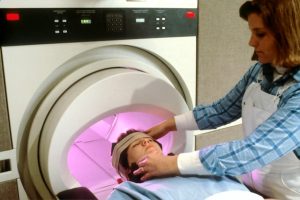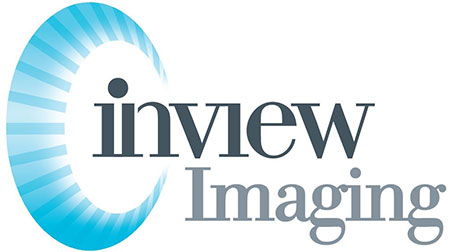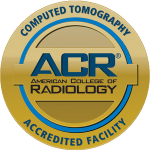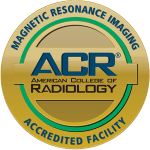Did you know that breast cancer is the most common cancer among women worldwide? One innovative technology making waves in breast cancer detection is 3D mammography. By offering a more detailed view of breast tissue, 3D mammography, also known as digital breast tomosynthesis, enhances early detection capabilities. This advanced imaging technique reduces the need for additional screenings and provides clearer images, leading to more accurate diagnoses.
Key Takeaways

-
3D mammography offers improved accuracy: Consider opting for 3D mammography for a more detailed and accurate breast cancer screening.
-
Ideal candidates: Women with dense breast tissue or a family history of breast cancer may benefit the most from 3D mammography.
-
Prepare for your appointment: Ensure a successful 3D mammogram by following preparation guidelines provided by the healthcare facility.
-
Address concerns with your healthcare provider: If you have any worries or doubts about 3D mammography, discuss them openly with your healthcare provider for clarity.
-
Insurance coverage: Check with your insurance provider to understand coverage for 3D mammography to avoid unexpected costs.
-
Find a reputable center: Choose a certified and experienced 3D mammography center for quality and reliable results.
Understanding 3D Mammography
Key Advantages
3D mammography significantly enhances cancer detection by providing a clearer and more detailed view of the breast tissue. This advanced 3D breast technology allows radiologists to detect tumors that may be hidden in traditional 2D mammograms.
Combining 3D mammograms with standard mammograms offers comprehensive imaging that can detect abnormalities from various angles. This approach increases the chances of early cancer detection, leading to timely treatment and improved outcomes for patients.
The advantages of 3D mammograms are particularly evident in dense breast tissue, where traditional 2D mammograms may miss detecting small tumors. 3D imaging provides better visibility and accuracy in identifying abnormalities, reducing the risk of false negatives.
Technology Explained
3D mammography utilizes tomosynthesis to capture multiple images of the breast from different angles, creating a three-dimensional reconstruction. This detailed image helps radiologists examine the breast tissue layer by layer, improving the detection of abnormalities.
One key benefit of 3D mammography is its ability to see through overlapping breast tissues, which can obscure potential abnormalities in standard 2D images. By capturing clearer images, this technology reduces the chances of false positives or missed diagnoses.
Advancements in 3D mammography technology have revolutionized breast cancer screening by enhancing image quality and diagnostic accuracy. The ability to visualize the breast in three dimensions has significantly improved the detection of early-stage cancers.
3D vs Standard Comparison
When compared to standard mammograms, 3D mammography demonstrates higher cancer detection rates, especially for invasive cancers. Studies have shown that this advanced imaging technique can detect up to 40% more invasive cancers than traditional 2D mammograms.
Patients undergoing 3D mammography experience a reduced need for follow-up imaging, as the comprehensive images captured during the initial screening provide detailed information for accurate diagnosis. This minimizes additional tests and anxieties associated with inconclusive results.
In cases of dense breast tissue, 3D mammography outperforms standard mammograms by offering improved detection capabilities. The detailed images produced by 3D technology enable radiologists to identify small tumors that may be masked in traditional 2D scans.
Benefits of 3D Mammography
Improved Detection Rates
3D mammography, also known as breast tomosynthesis, enhances cancer detection compared to 2D mammograms. It can detect more cancers by capturing multiple images from various angles. This technology offers increased accuracy in identifying breast abnormalities, aiding in early cancer diagnosis. The improved detection rates play a crucial role in detecting cancer at its earliest stages.
Reduced False Positives
Digital breast tomosynthesis significantly reduces false-positive results common in 2D mammograms. By providing a clearer view of the breast tissue, it minimizes unnecessary follow-up tests and biopsies. The impact of reduced false positives is profound, alleviating patient anxiety and avoiding unnecessary medical procedures. Accurate results are vital in preventing unnecessary interventions and ensuring peace of mind for patients.
-
Pros:
-
Decreased anxiety levels for patients
-
Minimized unnecessary testing and interventions
-
Better Visualization
Through advanced imaging techniques, 3D mammography offers clearer and more detailed images of the breast tissue. This improved visualization enables radiologists to identify abnormalities with greater precision. The benefits of better visualization include enhanced detection of subtle changes in the breast, leading to more accurate diagnoses.
Enhanced Comfort
Compared to traditional mammograms, 3D mammography provides enhanced comfort during the screening process. The technology allows for quicker image acquisition, reducing discomfort for patients. Enhanced comfort plays a significant role in encouraging women to undergo regular screenings, promoting early detection of breast cancer. Patient comfort is essential in fostering breast health awareness and ensuring women prioritize their well-being.
-
Cons:
-
Availability may be limited in certain healthcare facilities
-
Increased cost compared to standard mammograms
-
Ideal Candidates for 3D Mammography
Age Considerations
Age plays a crucial role in determining the suitability of 3D mammography. Younger women may benefit from this advanced screening method due to their denser breast tissue. As women age, breast density typically decreases, making 3D mammograms more effective for older individuals. Personalized breast cancer screening strategies should take into account age-related changes in breast composition.
When considering 3D mammography options, it’s essential to factor in age-related aspects that influence screening outcomes. Younger women often have denser breasts, which can make traditional mammograms less accurate in detecting abnormalities. In contrast, older women with less dense breast tissue may find 3D mammography more beneficial for identifying potential signs of breast cancer.
Family History
Understanding one’s family history is vital for assessing the risk of developing breast cancer. Individuals with a strong family history of the disease may opt for 3D mammography to enhance early detection efforts. Genetic predisposition to breast cancer can influence screening decisions, prompting healthcare providers to recommend 3D mammography for high-risk individuals.
When evaluating mammography options, individuals with a family history of breast cancer must consider the potential benefits of 3D mammography. Family history serves as a critical indicator of an individual’s susceptibility to the disease, guiding healthcare professionals in recommending appropriate screening methods. Genetic factors linked to familial breast cancer can impact the effectiveness of 3D mammograms in detecting early-stage tumors.
Breast Density
Breast density significantly impacts the accuracy of conventional mammograms in detecting breast abnormalities. Women with dense breast tissue face challenges in having potential cancers detected through standard screenings. The introduction of 3D mammography has revolutionized cancer detection by providing clearer images that improve visibility in dense breasts.
When discussing quality screening mammograms, addressing breast density is crucial for understanding the limitations of traditional imaging techniques. Detecting cancer in dense breasts can be challenging due to overlapping tissues that may obscure abnormalities. The implementation of 3D mammography addresses these challenges by offering multiple images from various angles, enhancing the detection of tumors in dense breast tissue.
Addressing Common Concerns
Radiation Safety
Radiation exposure during 3D mammography is minimized through advanced technology and safety protocols. Facilities carefully regulate radiation levels to ensure patient safety. The risks associated with radiation exposure in mammography are low, with doses tailored to be as low as possible.
Importantly, regular mammograms significantly outweigh the minimal risks of radiation exposure. Ensuring radiation safety is crucial in breast cancer screening to detect abnormalities early. Patients should prioritize facilities that adhere to strict safety guidelines for peace of mind.
Screening Discomfort
Discomfort during mammography screenings is a common concern among patients. Steps can be taken to reduce discomfort, such as adjusting positioning and using cushions for support. Open communication with technologists about any discomfort can help improve the experience.
Patient comfort plays a vital role in encouraging regular breast cancer screenings. Ensuring a comfortable environment and addressing patient concerns promptly can lead to more positive screening experiences.
Test Availability
3D mammography is increasingly available in healthcare facilities, offering improved detection rates compared to traditional mammograms. Patients should choose facilities offering 3D mammograms for enhanced accuracy in detecting abnormalities.
The availability of 3D mammography can vary by region due to factors like equipment costs and training requirements for staff. Patients should consider these factors when selecting a facility for their breast cancer screenings.
Preparing for Your 3D Mammogram
What to Expect
When you arrive for your 3D mammogram, the technician will guide you through the procedure. 3D mammography involves taking multiple X-ray images of the breast from different angles. These images are then reconstructed into a 3D view, providing a more detailed look at the breast tissue.
During the 3D mammogram, you will be positioned in front of the imaging machine. The technician will compress each breast between two plates for a few seconds to capture the images. This compression may cause some discomfort but is necessary for clear and accurate images.
After the 3D mammogram, the radiologist will review the images to check for any abnormalities or signs of breast cancer. Results are usually available within a few days, and if further tests are needed, the medical team will guide you through the next steps.
How to Prepare
Before your 3D mammography appointment, make sure to wear comfortable clothing and avoid using deodorants, lotions, or powders on your chest area. These substances can interfere with the imaging process.
It’s essential to schedule your 3D mammogram at a time when your breasts are less likely to be tender. Ideally, this would be during the first week of your menstrual cycle, as breasts tend to be less sensitive during this time.
When preparing for your 3D mammogram, remember to bring any prior mammogram images with you. This allows the radiologist to compare current and past images for any changes or abnormalities over time.
Understanding the Results
Reading the Results
Interpreting the results of a 3D mammogram involves understanding various outcomes. Normal results indicate no signs of abnormalities, providing reassurance and peace of mind. Abnormal results, on the other hand, may require further tests or evaluations to rule out potential issues.
Receiving abnormal results from a 3D mammogram can be concerning, but it’s essential to remain calm and follow up promptly. Follow-up discussions with healthcare providers are crucial to determine the next steps and address any concerns. These conversations help in understanding the implications of the results and deciding on the appropriate course of action.
-
Pros:
-
Enhanced accuracy in detecting breast abnormalities.
-
Reduced need for additional imaging tests.
-
-
Cons:
-
Possibility of false positives leading to unnecessary anxiety.
-
Increased radiation exposure compared to traditional mammography.
-
Next Steps
Upon receiving the results of a 3D mammogram, recommended actions may vary based on the findings. For normal results, continuing with regular screenings as advised by healthcare professionals is typically recommended. However, in cases of abnormal results, further diagnostic tests such as ultrasound or biopsy may be necessary to confirm or rule out any issues.
After undergoing a 3D mammogram, follow-up procedures play a critical role in ensuring comprehensive breast health. Regular screenings at recommended intervals are essential for early detection and timely intervention if any changes are detected. It’s vital to adhere to these follow-up appointments to monitor any developments and take proactive measures if needed.
-
Schedule follow-up appointments as advised by your healthcare provider.
-
Stay informed about any additional tests or procedures recommended based on your mammogram results.
Insurance and Costs
Coverage Overview
Insurance coverage for 3D mammography varies based on individual policies and providers. Factors such as age, family history, and risk levels can influence coverage eligibility. It is crucial to check with your insurance company to understand what they cover regarding breast cancer screenings.
Understanding insurance policies related to mammograms is essential for women seeking early detection of breast cancer. Policies may differ in terms of copayments, deductibles, and network providers, impacting the accessibility and affordability of 3D mammography services.
Cost Comparison
Comparing the costs of 3D mammography to standard mammograms reveals differences in pricing. While 3D mammography may be more expensive upfront, it can potentially reduce the need for additional imaging tests and biopsies due to its advanced technology. This can result in cost savings in the long run.
Factors influencing the cost of breast cancer screenings include facility fees, radiologist fees, and insurance coverage. Some insurance plans may fully cover 3D mammography, while others may require out-of-pocket expenses. Understanding these factors can help individuals make informed decisions about their screening options.
Finding a 3D Mammography Center
Searching Tips
When searching for facilities providing 3D mammography, start by consulting your primary care physician for recommendations. Look for centers accredited by the American College of Radiology (ACR) for quality assurance. Consider the proximity of the facility to your home for convenience.
Explore online platforms like the ACR’s website or local health department portals to find certified centers offering 3D mammograms. Evaluate the facility’s reputation through patient reviews and ratings on healthcare directories. Ensure the center accepts your insurance plan to avoid unexpected out-of-pocket expenses.
To ensure a seamless experience, consider the criteria when selecting a healthcare provider for mammograms. Verify if the radiologists are board-certified and experienced in interpreting 3D mammography results. Check if the facility uses advanced equipment to provide accurate screenings for early detection of breast abnormalities.
Questions to Ask
Before undergoing 3D mammography, prepare a list of questions to ask healthcare providers. Inquire about the radiologist’s expertise in reading 3D mammograms and their track record in detecting breast abnormalities accurately. Ask about the equipment used and how often it undergoes maintenance to ensure optimal performance.
Clarifying doubts and concerns about the procedure is crucial for ensuring peace of mind before undergoing 3D mammography. Seek clarification on any discomfort or potential risks associated with the screening process. Discuss the frequency of follow-up screenings based on individual risk factors to maintain breast health.
Empower yourself through informed decision-making by discussing with healthcare providers the benefits and limitations of 3D mammography. Understand how this advanced technology enhances early detection of breast cancer compared to traditional 2D imaging. Make sure you comprehend the implications of screening results and follow-up recommendations.
FAQs on 3D Mammography
Common Questions
3D mammography, also known as digital breast tomosynthesis, is an advanced imaging technology used for breast cancer screening. One key benefit of 3D mammography is its ability to provide a more detailed view of the breast tissue, making it easier to detect abnormalities that may be hidden in traditional 2D mammograms. This can lead to earlier detection of breast cancer.
Another advantage of 3D mammography is its ability to reduce false positives and callbacks for additional imaging. With clearer images and better visibility, radiologists can more accurately identify suspicious areas, reducing unnecessary anxiety and follow-up appointments for patients.
e women wonder about the safety of 3D mammography due to the slightly higher radiation dose compared to 2D mammograms. However, studies have shown that the benefits of early cancer detection far outweigh the minimal increase in radiation exposure.
Expert Answers
Experts emphasize that 3D mammography offers significant advantages over traditional 2D mammograms. One crucial aspect is the improved accuracy in detecting invasive cancers, especially in women with dense breast tissue. The technology allows radiologists to examine the breast tissue layer by layer, leading to fewer missed cancers and a higher cancer detection rate.
3D mammography can help reduce the need for additional imaging tests and biopsies by providing a clearer picture of the breast tissue. This not only saves time and resources but also minimizes unnecessary procedures and interventions for patients.
Radiologists recommend that women discuss their individual risk factors and preferences with their healthcare providers to determine the most suitable screening option for them. While 3D mammography offers numerous benefits, including improved cancer detection rates and reduced false positives, it may not be necessary for every woman depending on her specific circumstances.
Closing Thoughts
After exploring the benefits of 3D mammography, you now have a clearer understanding of why it’s a game-changer in breast cancer detection. Knowing the advantages, the ideal candidates, how to address concerns, prepare for your mammogram, interpret results, handle insurance matters, find a suitable center, and clarifying FAQs empowers you to make informed decisions about your health proactively.
Take charge of your well-being by scheduling a 3D mammogram today. Your health is non-negotiable, and early detection could be life-saving. Stay proactive, stay informed, and prioritize regular screenings to ensure you’re taking every step possible towards a healthy future.
Frequently Asked Questions
What is 3D mammography and how does it differ from traditional mammography?
3D mammography, also known as digital breast tomosynthesis, captures multiple images of the breast from different angles to create a 3D image. This allows for better detection of abnormalities compared to 2D mammography.
Who can benefit the most from 3D mammography?
Women with dense breast tissue, a family history of breast cancer, or those with previous inconclusive results from 2D mammograms can benefit significantly from 3D mammography due to its improved accuracy in detecting abnormalities.
Is 3D mammography safe and does it involve more radiation exposure during mammogram screening?
3D mammography is considered safe and involves a similar amount of radiation as traditional 2D mammograms. The benefits of improved detection rates often outweigh the minimal increase in radiation exposure.
How should I prepare for a 3D mammogram appointment?
On the day of your appointment, avoid using deodorants, lotions, or powders on your chest area. Wear comfortable clothing and be prepared to remove any jewelry or clothing that may interfere with the imaging process.
Will my insurance cover the cost of a 3D mammogram?
Many insurance plans cover the cost of 3D mammograms, especially if your healthcare provider recommends it based on your individual risk factors. It’s advisable to check with your insurance provider beforehand to understand your coverage.


